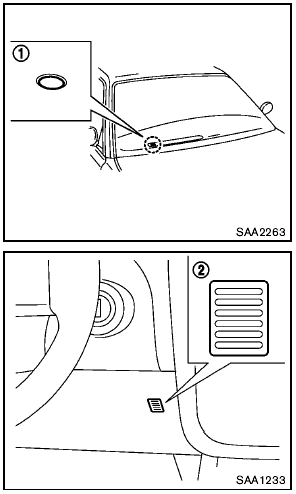Servicing air conditioner

The air conditioner system contains refrigerant under high pressure. To avoid personal injury, any air conditioner service should be done only by an experienced technician with the proper equipment.
The air conditioner system in your vehicle is charged with a refrigerant designed with the environment in mind.
This refrigerant will not harm the earth’s ozone layer. However, it may contribute in a small part to global warming.
Special charging equipment and lubricant are required when servicing your vehicle’s air conditioner.
Using improper refrigerants or lubricants will cause severe damage to the air conditioner system. (See “Air conditioning system refrigerant and lubricant recommendations” in the “9. Technical and consumer information” section.) A NISSAN dealer will be able to service your environmentally friendly air conditioner system.
Air conditioner filter
The air conditioner system is equipped with an air conditioner filter which collects dirt, pollen, dust, etc. To make sure the air conditioner heats defogs, and ventilates efficiently, replace the filter according the specified maintenance intervals listed in a separate maintenance booklet. To replace the filter, contact a NISSAN dealer.
The filter should be replaced if the air flow decreases significantly or if windows fog up easily when operating the heater or air conditioner.

See also:
To turn system off
Press the /OFF button. ...
Engine cooling system
The engine cooling system is filled at the factory
with a pre-diluted mixture of 50% Genuine
NISSAN Long Life Antifreeze/Coolant (blue) and
50% water to provide year-round anti-freeze and
cool ...
Increasing fuel economy
● Accelerate slowly and smoothly. Maintain
cruising speeds with a constant accelerator
position.
● Drive at moderate speeds on the highway.
Driving at high speed lowers fuel economy.
...
